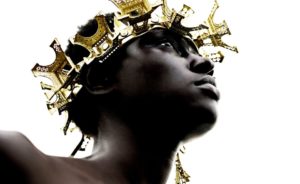
Another exhibition on contemporary African art of Simon Njami. He is known as the curator of Africa Remix (2005), the first African Art Fair (2008) in Johannesburg, The Divine Comedy (2014) in Frankfurt and the Dak’Art of last year in Senegal.
Rob Perrée reports from Paris.
AFRIQUES CAPITALES
A report from Paris about a large project of contemporary African art
“The challenge of this exhibition is to invent the city of all cities: a city that belongs to no one but in which everyone can find their own personal bearings. Some will seek to recognize this or that city in Africa or France, but in reality we are immersed in a fiction whose aim is to highlight what is essential and to plunge the audience into a new and different truth. A truth made up of heterochrony, heterotopy and heterology. The African city which some like to fantasize about does not exist. (…) the city does not belong to anyone. It is first and foremost the home of those who inhabit it and give it its life.”
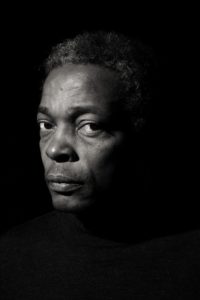
Simon Njami. Copyricht David Damoison.
This is a quote of Simon Njami – born in Lausanne, African roots, living in Paris – the curator of Afriques Capitales, an exhibition of contemporary African art in Paris and Lille. He is known as the curator of Africa Remix (2005), the first African Art Fair (2008) in Johannesburg, The Divine Comedy (2014) in Frankfurt and the Dak’Art of last year in Senegal.
I have visited the project in La Villette in Paris. An interesting experience.

Hassan Hajjaj, Le Salon, 2017.
The entrance hall of the building is transformed into a Moroccan hip hop club by Hassan Hajjaj. An inspiring, creative and also functional start of an exhibition. From that colorful, merry making space I walk into a huge dark hall. The artworks have to come to life through light spots, the walking area gets minimal light through lamps looking like old fashioned streetlamps. I got disoriented, confused and irritated. Is this an example of a concept – the city of all cities – that is dominating or perhaps even taking over the art in an art exhibition? I know that ‘getting lost’ is a feeling that goes with big cities. I’ve been to places. I know my Roland Barth. It is a way of “taming the untamable”, it is a way of forcing the viewer to think about what ‘the story’ around him tells him. Fine, but why does it have to be a city by night? Or, is there an underlying concept that wants to transform the Western white cube into an African black cube? Is that the reason why the exhibition together with all the other cultural African activities in La Villette go under the umbrella name 100% Afrique?
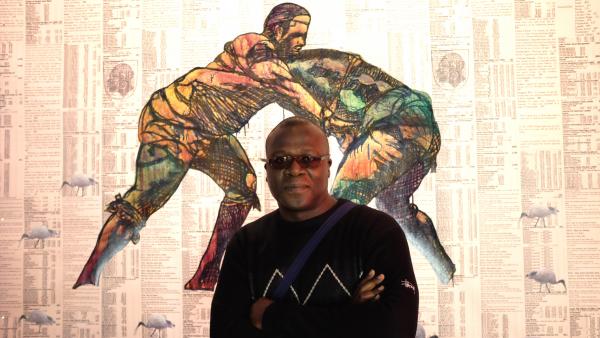
Godfried Donkor, New Olympians, 2017, Photo Siegfried Forster
Confronted with the first works of the exhibition the damaging effect of this concept becomes immediately clear: the English artist Godfried Donkor always paints, draws or glues (a) human figure(s) on a printed text (for instance a page of a newspaper). Because of the lighting only the painted human figures draw my attention. The text disappears, the interaction between image and text is gone.
I decide to a quick look and come back later.
My second visit to the exhibition makes it already easier to live with this handicap. I know by experience that Simon Njami always brings together interesting artists with often very good work. Works you want to see, works you want to experience, even if the circumstances are not ideal.
Here a selection out of these ‘wanted’ works. The reproductions of the works I present originate almost all from other exhibitions where the artworks were completely visible.

Pascale Marthine Tayou, Falling Houses, 2014.
The installation Falling Houses of Tayou is interesting as a provocation of traditional architecture, but also as a symbol of the diversity of human beings. In Paris it hung in the darkness above the collages of Donkor. I had seen it in another exhibition, so I could give it the ‘light of my memory’.
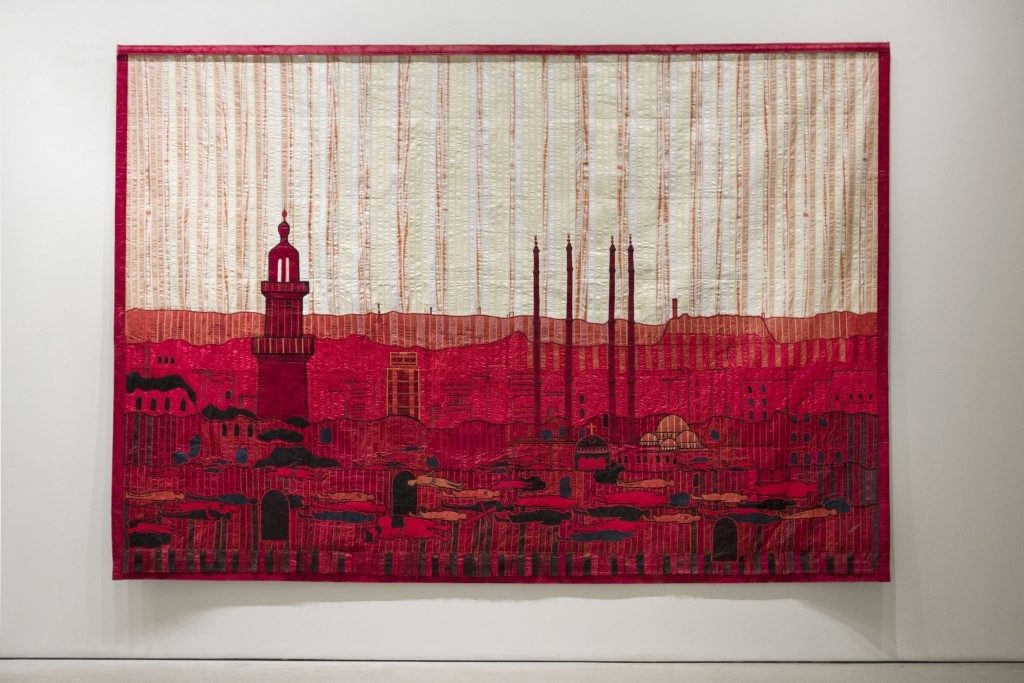
Abdoulaye Konatée, Alep 2016
This enormous tapestry is a homage to the people who saw their city destroyed by the violence of war. His work is also present at L’Afrique en Capitale, a comparable exhibition in the Museum of Contemporary Art in Rabat.
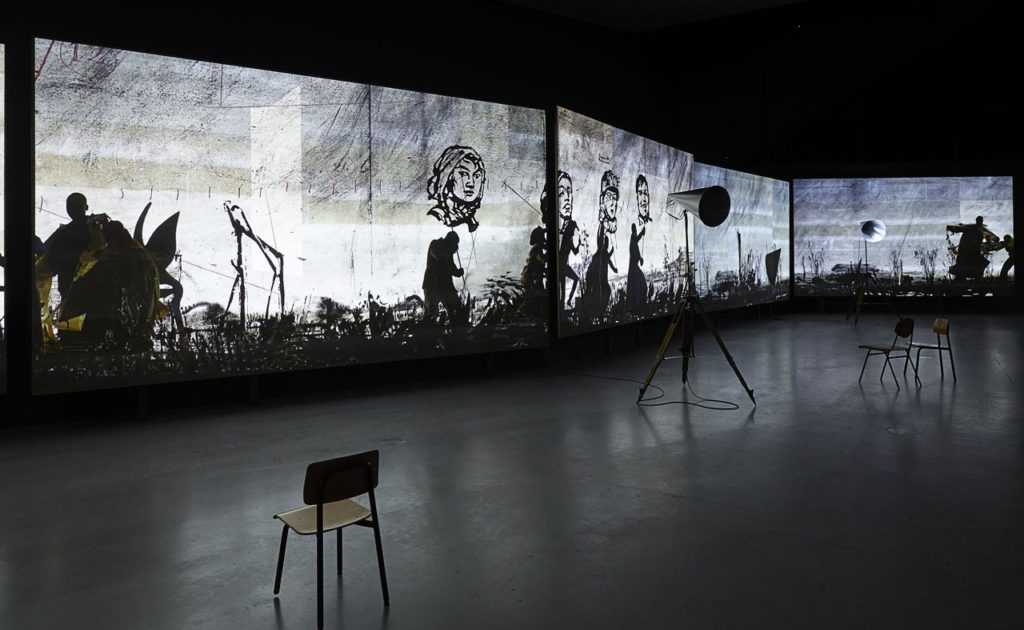
William Kentridge, More Sweetly Play the Dance, 2015.
This video installation blossomed in the darkness of Njami’s city. It is a fascinating ‘dance macabre’ that I have seen a couple times before, but that gets even better every time I see it. The animation touches me again, because of its quasi clumsy form and its effective combination of sound, image and movement.

Moataz Nasr, The Minaret, 2012.
A “monument à l’amour”, build out of found wood and crystal. There is light inside. A emotionally charged symbol of otherness transformed into a universal tower of love. In Paris it looked more like a Christmas tree……

Antoine Tempé, Débris de Justice, Dakar, 2016
Tempé has photographed the inside of the former Palais de Justice in Dakar. He presents it as a kind of slide-show. Through his lens boring bureaucratic, archival material turns into beautiful artifacts.
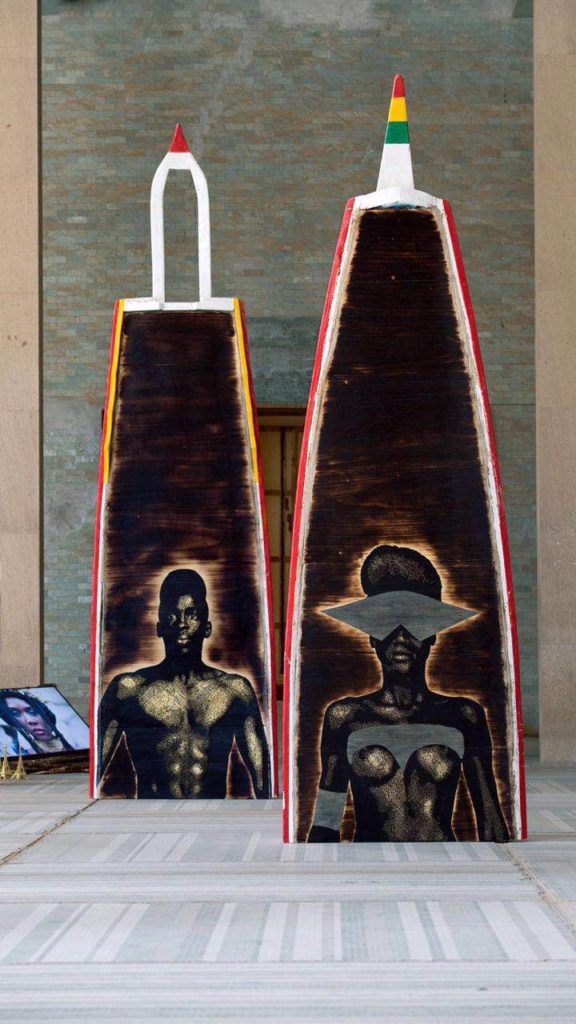
Alexis Peskine, Le Radeau de la Méduse, 2016 (detail of an installation)
Peskine is inspired by The Raft of Medusa by Géricault, the painting of a French ship, the Medusa, that sank in 1816 off the coast of Mauritania, leaving behind a raft with around 150 people. Thirteen days later, when rescue parties arrived, only 15 of them had survived after enduring dehydration and cannibalism, and the survivors were taken to St. Louis in Senegal. For Peskine this work became a tool to talk about migration. He chose for a multimedia installation as a way to express his idea. Part of this installation are a few so called acu-paintings: images he creates with nails that sit at different heights on wooden surfaces, providing yet another three dimensional aspect to his work.

Lavar Munroe, Of the Omens He Has as He Entered His Own Village, 2017 (detail installation).
This work is not only a statement about the tradition of statues, it also refers to Junkanoo, a tradition on the Bahamas (similar to carnival in Brazil). Two times a year people of all tribes come together to work on costumes for a parade. These costumes are made of cardboard, tape and paper. Recycling material for a recycling event.
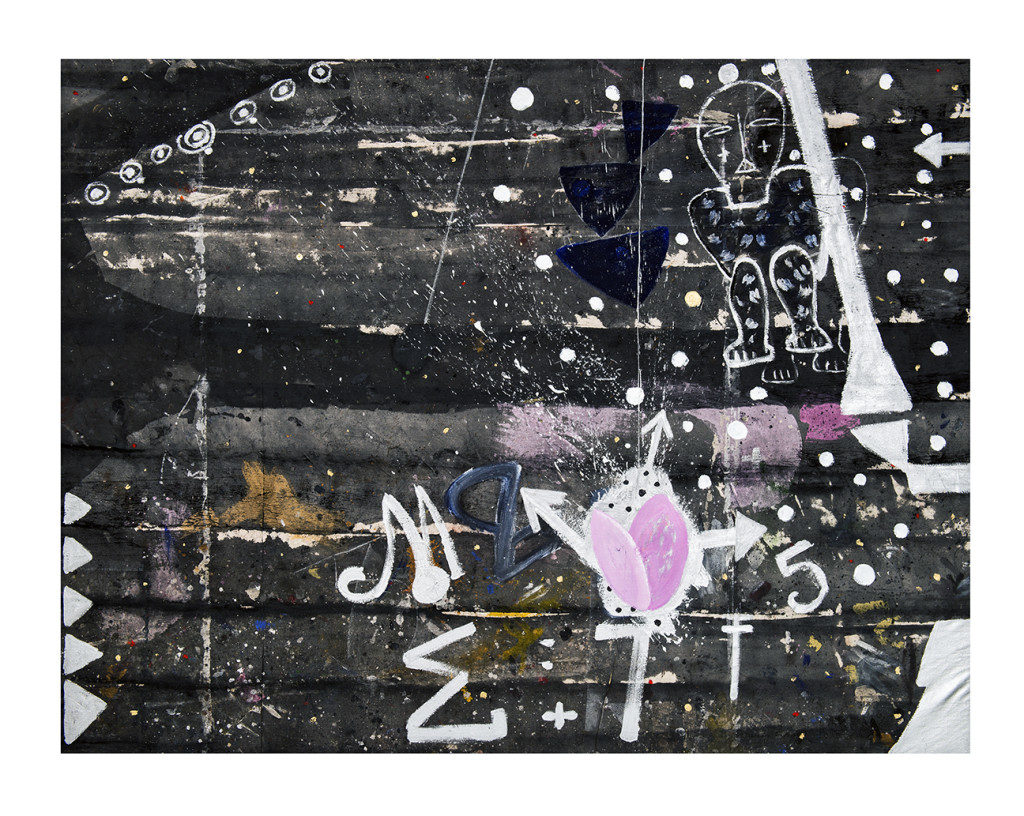
Ouattara Watts, Flash of the Spirit, 2016.
An assemblage of recycled material referring to the work of Basquiat and to the improvisational power of jazz music. Like the works of Donkor, this work suffered because of the lack of natural light.

François-Xavier Gbrée, Je suis africain, 2016.
“François-Xavier Gbré investigates what the city is concealing. The work raises the issue of urban change. A Chinese ideogram lit with neon adapts the assertion of a complex identity, I am African. The sharp light stands out from the profound and iconic ultramarine blue background. In a lightning claim, the words play around with the balanced script and their imperceptible meaning at first glance. The luminous sign recalls the commercial advertising used to sell consumables through an effective slogan. The foreign phrase resonates in context with the development of prolific property projects conducted by Chinese entrepreneurs in Africa”, says the press release of his gallery in Abidjan. It does not refer to the clean beauty of the installation itself. A great way to abstract a pretty scary development.
.
Outside of the Grand Hall of La Villette a photo exhibition is presented in a billboard kind of way. Powerful works of, among others, Aida Muluneh, Mario Macilau, Alexis Peskine (him again)and Zwelethu Mthethwa. All works that are very visible even if they disappear sometimes in the shadow.
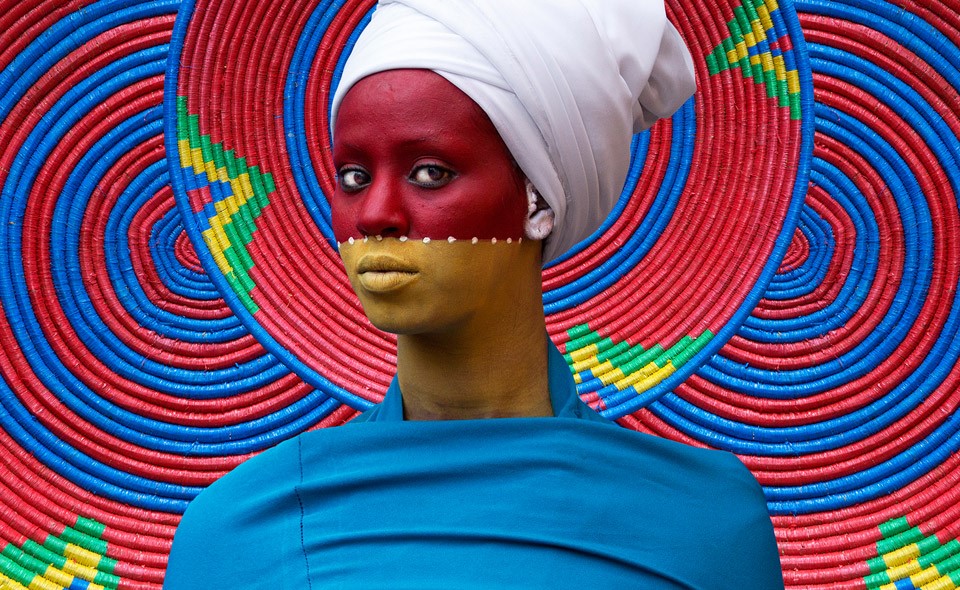
Aida Muluneh, Memories in Development, 2016.
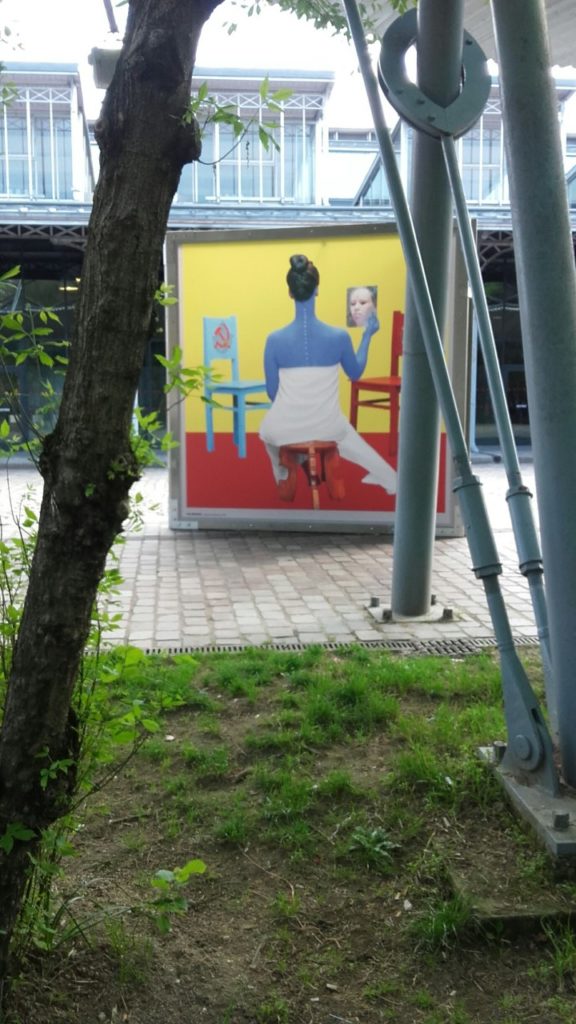
Aida Muluneh, Dreams and Delusions, 2016.

Zwelethu Mthethwa, untitled, 2010.
‘Afrique Capitales’ is, even with its practical limitations, an exhibition that gives an interesting overview of what’s going on in contemporary African art. It explains and illustrates why the interest in African art is growing rapidly.
Rob Perrée is art historian, independent writer and curator, founder and editor of Africanah.org. He lives and works in Amsterdam and Brooklyn.
